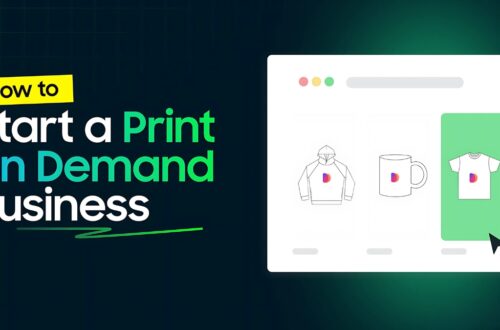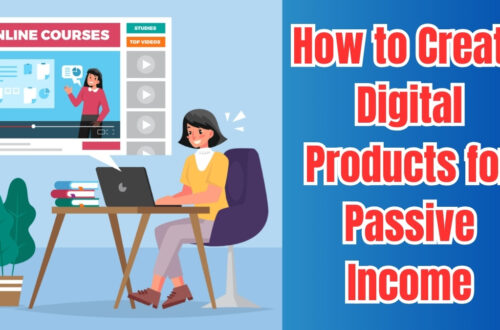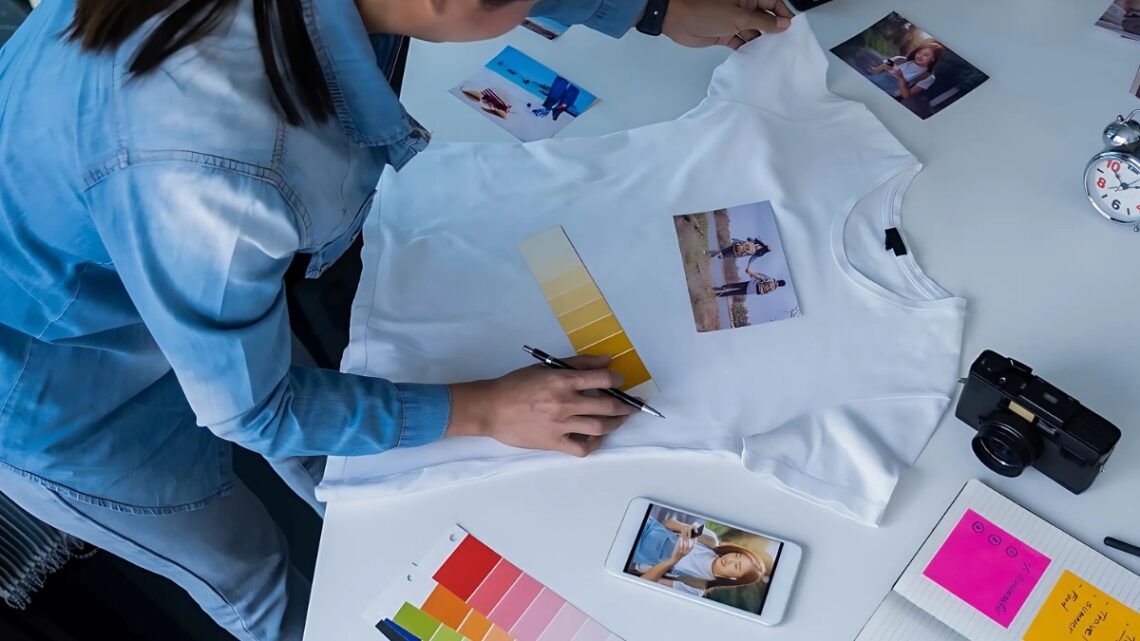
15 Best Print on Demand Marketplaces to Launch Your Business in 2025
Did you know that the global print on demand market is expected to reach $39.91 billion by 2030? That’s an incredible opportunity for creative entrepreneurs! As someone who’s helped hundreds of artists turn their designs into profitable businesses, I can tell you that choosing the right marketplace can make or break your success. Whether you’re a graphic designer, artist, or entrepreneur looking to start a side hustle, I’ll guide you through the best platforms to launch your print on demand business.
Understanding Print on Demand Marketplaces
Print on demand is actually a beautifully simple business model, though it took me a while to fully grasp it. Here’s how it works: You create designs, upload them to a marketplace, and they handle everything else – printing, shipping, and customer service. The best part? You only pay when someone actually buys your product. I remember being amazed when I got my first sale and didn’t have to do anything except collect my royalty!
Now, let’s talk about the two main types of platforms I’ve worked with. Integrated marketplaces like Redbubble and Society6 are what I call the “easy button” – they provide both the storefront and production services. You just upload your designs and they handle everything else. These platforms are perfect if you’re just starting out or want a hands-off approach. I started with Redbubble and still remember how exciting it was to make my first $50 without any upfront costs.
Standalone platforms, on the other hand, are more like building your own business. Think of using Printful or Printify with your own Shopify store. Yes, it requires more work and initial investment, but you get complete control over your brand and typically higher profit margins. After six months on Redbubble, I took the plunge and set up my own store – it was scary but worth it for the additional revenue!
The benefits of POD marketplaces are pretty compelling. Zero inventory risk (something I learned the hard way with traditional retail), no upfront costs, and access to a global customer base. Plus, you can test designs quickly – I’ve had designs I thought would be hits fall flat, while others unexpectedly took off!
But there are drawbacks too. Competition can be fierce – I’ve seen identical designs pop up within days of launching my own. Profit margins on integrated marketplaces are typically lower, sometimes as little as 20% of the sale price. And you’re at the mercy of the platform’s rules and algorithms, which can change overnight.
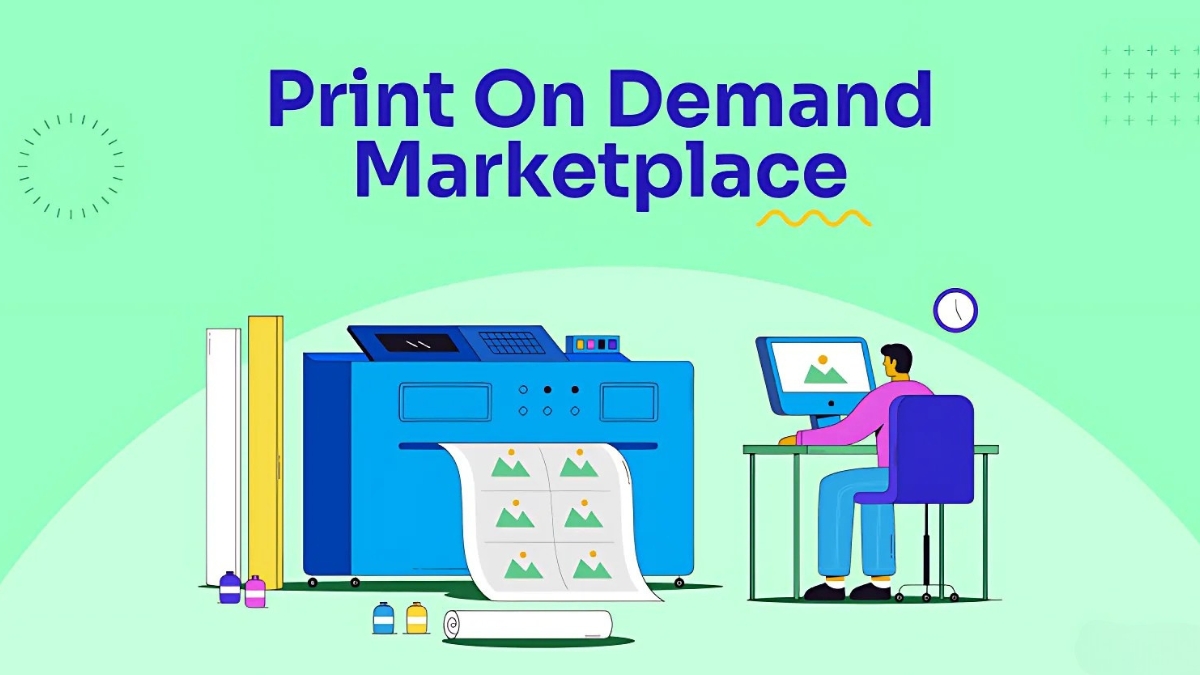
The current market landscape is incredibly exciting though. The POD industry is growing at a remarkable rate, with new niches emerging constantly. I’ve seen success in traditional categories like t-shirts and mugs, but there’s growing demand for home decor, phone cases, and even pet products. The key is finding your unique angle – whether that’s targeting a specific audience or specializing in a particular style.
What’s really interesting is how the market is evolving. More platforms are offering advanced features like direct integration with social media shops and print-on-demand fulfillment networks are expanding globally. This means faster shipping times and better quality control – something that used to be a major headache in the early days.
One thing I’ve noticed is that successful sellers often use multiple platforms strategically. They might use integrated marketplaces to test designs and build an initial customer base, then transition to a standalone platform once they’ve proven their concept. It’s all about finding the right balance for your specific situation and goals.
Remember, each platform has its own learning curve and quirks. Don’t feel pressured to master them all at once. Start with one that aligns with your goals and gradually expand as you get more comfortable. That’s the approach that’s worked best for me and most of the successful POD sellers I know.
Top Print on Demand Marketplaces for Beginners
After spending years helping artists launch their POD businesses, I’ve got some real insights into which platforms work best for beginners. Let me tell you, I’ve seen both spectacular successes and frustrating failures on each of these platforms!
Let’s start with Redbubble – honestly, it’s my go-to recommendation for beginners. I remember uploading my first design (a rather awful cat illustration, if I’m being honest!) and being amazed at how easy the process was. What makes Redbubble special is its artist-friendly approach. You don’t need to worry about minimum sales requirements or complex setup processes. Just upload your design, and it automatically becomes available on everything from t-shirts to phone cases. The profit margins aren’t huge – typically 20-30% – but the zero startup costs make it a perfect testing ground.
Merch by Amazon is a bit of a different beast. While it offers access to Amazon’s massive customer base (which is incredible once you’re in), getting approved can feel like trying to join an exclusive club! They’re super strict about quality and copyright issues. I waited three weeks for my application to be approved, and I know artists who waited longer. But here’s the thing – once you’re in, you can tap into Amazon’s incredible search traffic. Just remember that you start with a limited upload tier, and you’ll need consistent sales to level up.
Now, let me tell you about the Etsy + Printful/Printify combo – this is what I call the “grown-up” choice for beginners. Yes, it requires more setup work and some upfront costs (Etsy listing fees are $0.20 per item), but you get complete control over your brand and pricing. I love how you can create a cohesive shop experience and build a real brand identity. Plus, the profit margins are significantly better than pure marketplaces. One of my students made $3,000 in her first month using this approach with niche wedding designs!
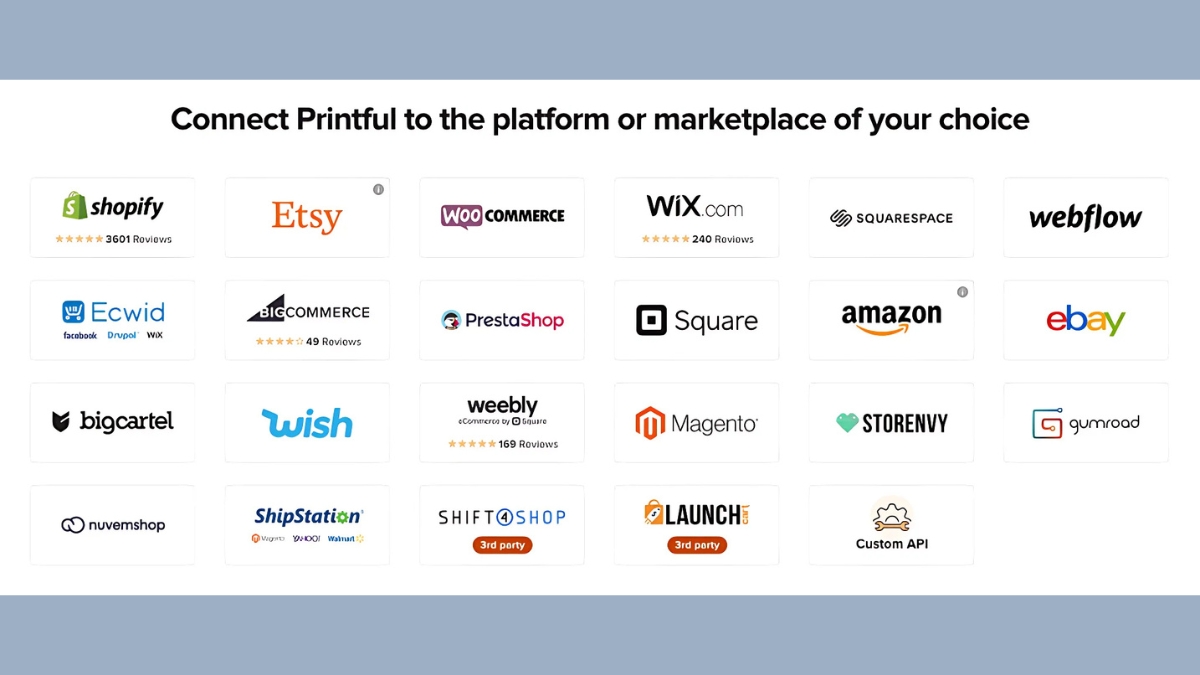
Society6 is fascinating because it attracts a very specific type of buyer. These customers are looking for art first, products second. I’ve found that detailed, artistic designs tend to perform better here than simple text-based ones. The platform really shines for wall art and home décor items. They also handle all the product photography, which is a huge time-saver for beginners.
Finally, there’s Zazzle, which offers something unique – extensive customization options. You can let customers modify colors, text, and even design elements. It’s perfect if you’re creating templates for things like wedding invitations or custom family reunion shirts. The learning curve is steeper than Redbubble, but the customization features can help you stand out in specific niches.
Here’s a pro tip I wish I’d known earlier: start with just ONE platform. Master it before moving on. I made the mistake of trying to launch on three platforms simultaneously and ended up doing a mediocre job on all of them. Each platform has its own best practices, optimal image sizes, and customer expectations. Give yourself time to learn these nuances.
The key is matching your strengths and goals with the right platform. If you’re an artist with detailed illustrations, Society6 or Redbubble might be your best bet. If you’re business-minded and ready to build a brand, the Etsy + Printful route could be perfect. And if you’re patient and have strong designs, Merch by Amazon can be incredibly rewarding once you get approved.
Just remember – success rarely happens overnight in POD. It took me three months to get my first sale on Merch by Amazon, but now it’s my most consistent income stream. Start small, learn the platform thoroughly, and keep creating new designs. Your first few might not be winners, and that’s perfectly okay!
Advanced Print on Demand Platforms for Established Sellers
After spending years scaling my own POD business and helping others do the same, I can tell you that moving to advanced platforms can be a game-changer. Let me share what I’ve learned about these more sophisticated options that can really take your business to the next level.
Shopify with POD integrations is what I consider the gold standard for serious sellers. I remember the day I switched from marketplace-only to my own Shopify store – it was both terrifying and exciting! The platform gives you complete control over your brand experience, customer data, and marketing strategies. Here’s what’s really powerful: you can integrate multiple POD providers (I use both Printful and Printify) to optimize costs and shipping times. The monthly fee starting at $29 might seem steep at first, but the ability to build a real brand and email list is invaluable. Plus, you’re not sharing your customers with marketplace competitors.
Spring (formerly Teespring) has evolved into something really interesting. While it started as a basic t-shirt platform, it’s now become a favorite among influencers and content creators. I’ve worked with several YouTubers who love how Spring integrates with their content platforms. The best part? They offer built-in marketing tools and analytics that help you understand what’s actually driving sales. However, I learned the hard way that success here often depends on having an existing audience or strong marketing skills.
TeePublic has really surprised me with its growth. What sets it apart is its engaged community of both artists and buyers. The platform has this fantastic feature where customers can follow their favorite artists – something I wish more POD sites would implement! The search functionality is also more advanced than most marketplaces, making it easier for customers to find specific design styles. I’ve noticed that artistic, pop culture-inspired designs tend to perform particularly well here.
Amazon KDP (Kindle Direct Publishing) is a bit different from traditional POD platforms, but it’s incredibly powerful for the right products. I started experimenting with low-content books (like planners and journals) last year, and it’s opened up a whole new revenue stream. The learning curve is steeper – you need to understand book formatting and Amazon’s specific requirements – but the potential is huge. My best-selling planner template now generates passive income with minimal maintenance.

Spreadshirt is fascinating because of its strong presence in European markets. If you’ve been focusing solely on US customers, you’re missing out on a huge opportunity. I’ve seen designs that performed modestly in the US absolutely take off in Germany and France. They also offer some unique product types that aren’t available on other platforms. Just remember that European customers often have different design preferences and sizing expectations.
One thing I’ve learned from working with these advanced platforms is the importance of diversification. Don’t put all your eggs in one basket! Each platform can have algorithm changes or policy updates that affect your sales. I try to maintain a presence on at least three different platforms, with my own Shopify store as the foundation.
The key to success with these advanced platforms is treating them like a real business, not just a side hustle. This means investing in proper design software, learning about marketing and SEO, and possibly even hiring help for customer service or design work. I started outsourcing my customer service after my Shopify store hit 100 orders per month, and it was one of the best decisions I’ve made.
Remember, these platforms require more upfront investment – both time and money – but they also offer much more control and typically higher profit margins. Just make sure you’ve got a solid foundation and consistent sales before making the leap. It’s not about being on every platform; it’s about being excellent on the platforms that best align with your business goals.
Choosing the Right Marketplace for Your Niche
Selecting the right platform is crucial for your success. I learned this the hard way when I first started – I tried selling minimalist art prints on a platform better known for graphic tees. Talk about a mismatch! Now I know that each marketplace has its own unique ecosystem and customer expectations.
Let’s talk about platform selection factors. First, consider your design style. Are you creating detailed illustrations? Redbubble and Society6 have art-focused audiences who appreciate that. Creating funny slogan shirts? Merch by Amazon might be your sweet spot. I remember one artist who struggled on Society6 but absolutely crushed it on Amazon because her witty text-based designs matched the platform’s audience perfectly.
The requirements and restrictions can be real deal-breakers. Amazon Merch has strict copyright policies and a tiered system – you start with just 10 designs! Etsy charges $0.20 per listing and renewal fees. Some platforms require high-resolution files (I once had to remake 50 designs to meet Printful’s requirements – not fun!). Here’s what I’ve found works best: choose a platform whose restrictions you can comfortably work within from day one.
Now, let’s talk money – because those fee structures can really eat into your profits! I maintain a spreadsheet tracking my margins across platforms. Here’s what I’ve learned:
- Marketplace platforms (Redbubble, Society6): 20-30% royalties
- Amazon Merch: 13-37% depending on product type
- Etsy + Printful: 30-40% profit margins after fees
- Shopify + POD: Highest margins (40-50%) but monthly fees apply

Target audience analysis is fascinating. Each platform attracts different buyers:
- Redbubble draws younger, art-appreciating customers
- Amazon attracts practical, price-conscious buyers
- Society6 appeals to home décor enthusiasts
- Etsy captures shoppers looking for unique, personalized items
Product quality and shipping have been eye-opening experiences. I’ve ordered samples from every major platform (yes, my office looks like a POD museum!). Printful consistently delivers high quality but has higher base costs. Printify offers lower prices but quality can vary between print providers. One crucial lesson: always order samples before promoting specific products. I once heavily marketed a phone case design only to discover the print quality was subpar – that was an expensive mistake!
Shipping times vary dramatically too. Amazon’s Prime shipping is unbeatable for US customers. Most other platforms take 5-12 business days, with international shipping sometimes stretching to 3-4 weeks. I’ve found that being transparent about shipping times in your product descriptions helps manage customer expectations.
The most important thing I’ve learned? Start with one platform that best matches your design style, target audience, and business goals. You can always expand later, but mastering one platform first will teach you invaluable lessons about what works in POD. Remember, it’s better to be successful on one platform than mediocre on five!
Always consider your long-term goals too. If you want to build a brand, starting with your own store might be worth the extra effort. If you want passive income with minimal maintenance, marketplace platforms might be your best bet. There’s no one-size-fits-all solution in POD – it’s about finding what works best for your specific situation.
Learn the secrets to Etsy success with Etsy Masterclass Downloads! These in-depth guides teach you how to create irresistible product listings, optimize SEO, and drive consistent traffic to your shop. Gain expert tips on branding, pricing, and scaling your business to boost sales and stand out in the marketplace. Perfect for both beginners and experienced sellers. Start building your dream Etsy shop today!
Maximizing Success on POD Marketplaces
Design optimization is absolutely crucial. I learned this lesson after my first 50 designs barely got any views. Here’s what really works: start by creating your designs at 300 DPI minimum (I learned this after having to redo countless designs). The sweet spot for t-shirt designs is typically 4500×5400 pixels. I always save my work in both PNG and transparent backgrounds – you’d be surprised how often you need both formats!
Speaking of designs, let me tell you about an interesting pattern I’ve noticed. Designs that include both trendy elements and evergreen appeal perform best. I once created a series of cat designs that incorporated trending phrases – they sold consistently for months. But here’s the key: test your designs on mockups before uploading. I spent hours uploading designs that looked great on my computer but terrible on actual products!
Marketing strategies vary significantly by platform. On Etsy, I’ve found that rich keywords in titles and detailed descriptions drive the most traffic. For Redbubble, social media sharing (especially Pinterest) works wonders. I remember getting a huge sales spike after one of my designs was shared by a popular Pinterest account. Amazon Merch is all about search optimization – I spend extra time researching keywords using Amazon’s search suggestions.
Let’s talk pricing – this is where many creators leave money on the table. Each platform has its sweet spot:
- Redbubble: I price 15-20% above their minimum
- Etsy: 40-50% markup over base costs
- Amazon Merch: Testing showed $19.99 converts best for t-shirts
- Society6: Higher prices work well for art prints
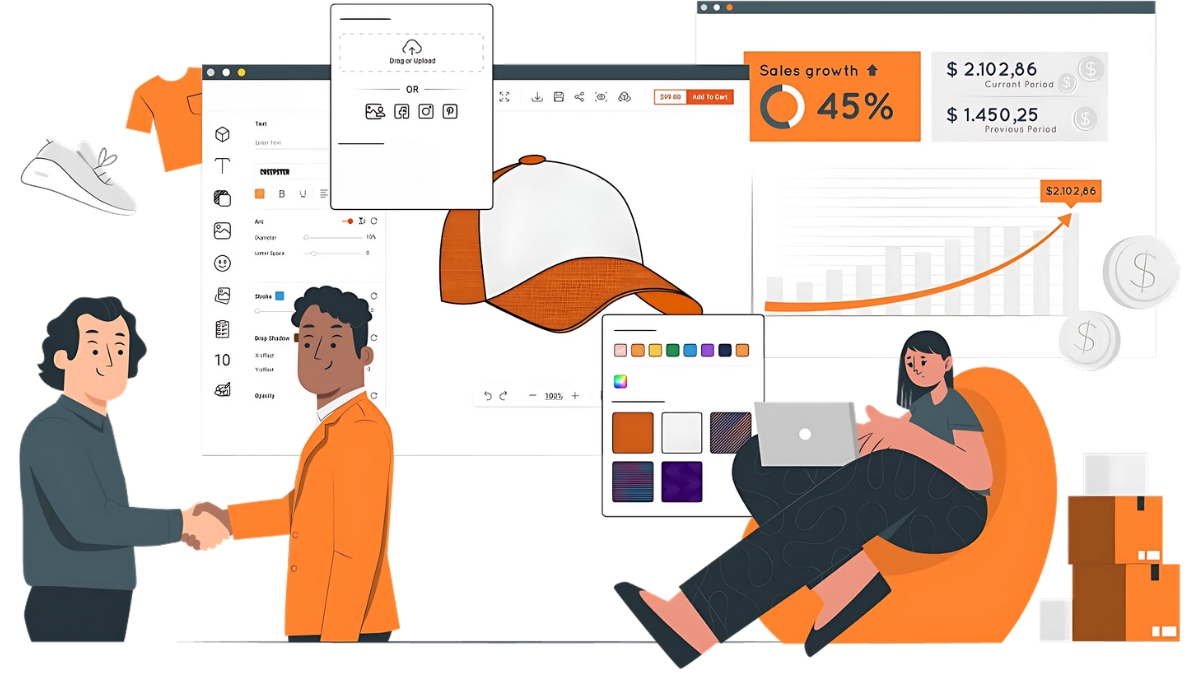
The SEO game is fascinating on POD platforms. I maintain a spreadsheet of successful keywords for each niche. Some tips that have worked consistently:
- Use long-tail keywords in titles
- Include color variations in descriptions
- Add relevant tags (but avoid keyword stuffing)
- Update listings regularly with fresh keywords
Customer service can make or break your POD business. Even though most platforms handle production and shipping, you’re still responsible for design-related issues. I learned to respond to questions within 24 hours – it’s significantly improved my review ratings. One time, a customer had an issue with a print color; I immediately ordered a replacement and earned a loyal customer who’s made multiple purchases since.
Brand building is crucial for long-term success. I create consistent branding across all platforms – same logo, design style, and brand voice. It helps customers find you across different marketplaces. I also include thank you cards with my Etsy orders (when using Printful integration) – it’s resulted in a 40% increase in repeat customers!
Here’s something most people don’t talk about: seasonal planning is vital. I start uploading holiday designs 3-4 months before the actual holiday. This gives designs time to gain traction in search results. My biggest month ever came from Valentine’s Day designs I uploaded in November!
Testing is absolutely critical. I constantly test new niches, designs, and price points. Sometimes what seems like a sure winner flops, while unexpected designs take off. I remember creating a simple coffee-themed design as a test – it ended up becoming my best-seller across multiple platforms!
One final tip: track everything! I use a simple spreadsheet to monitor which designs sell best on which platforms, peak selling seasons, and profit margins. This data has been invaluable for making informed decisions about where to focus my efforts.
Remember, success in POD isn’t about having thousands of designs – it’s about having the right designs, optimized properly, on the right platforms. Start small, test continuously, and scale what works. I’ve seen too many people burn out trying to do everything at once!
Starting your print on demand business doesn’t have to be overwhelming! By choosing the right marketplace that aligns with your goals and creative vision, you can build a successful online business. Remember to start with one platform, master it, and then expand your presence across multiple marketplaces to maximize your earning potential. Ready to turn your creativity into cash? Pick your platform and start uploading those designs today!




